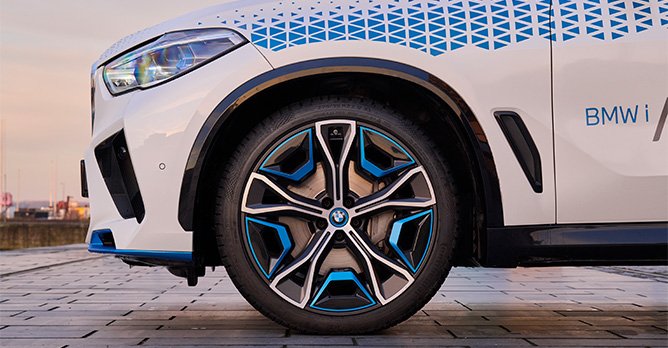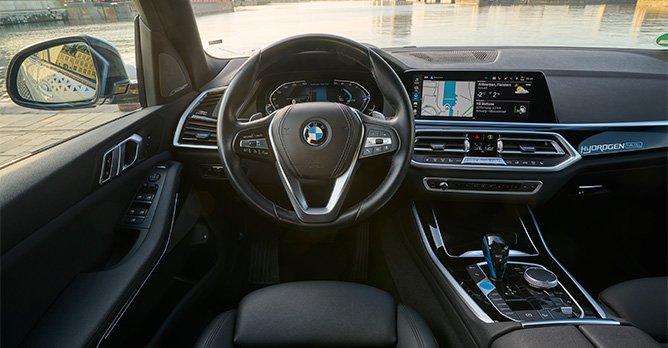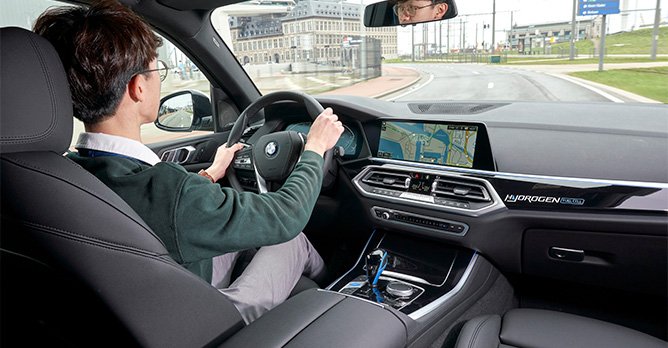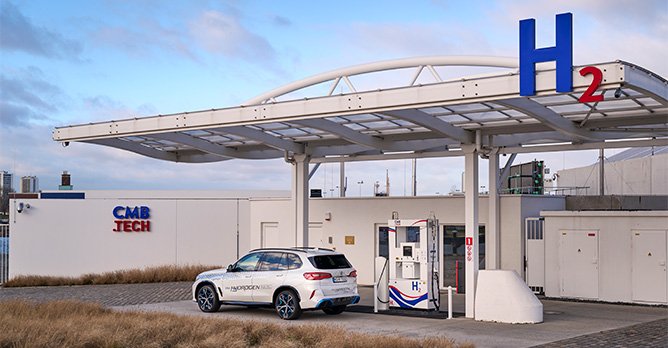BMW iX5 Hydrogen First Drive Review
27 Feb 2023|5,532 views
What We Like
Clever packaging means it offers same practicality as plug-in hybrid X5
Serves up all the enjoyable qualities of an EV, chief of which are refinement and light-footedness
Lighter than similarly-sized BEV
Good range of close to 500km
Hydrogen tanks require only four minutes to refill
What We Dislike
Hydrogen refuelling infrastructure still feels out of reach locally
Not making a stop in Singapore
i.
Alongside the colour blue, that's a letter we've come to associate with BMW's range of electric vehicles for a while now. And by a while, we mean more than nine years - since the covers were first pulled off a curious-looking hatch called the BMW i3.
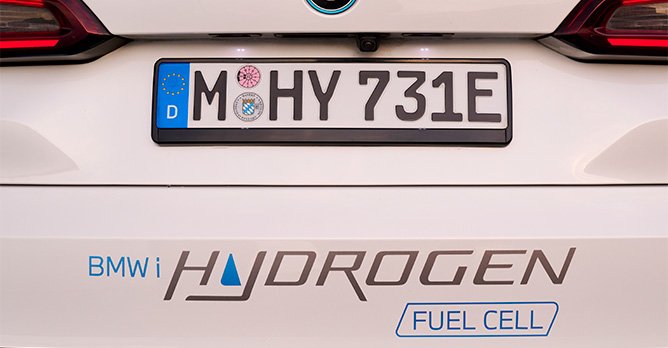
It says a lot, then, that it hasn't just tacked 'Hydrogen' to the back of the name of its latest X5-resembling fuel cell electric vehicle (FCEV). Instead, in naming it the BMW iX5 Hydrogen, the firm is making it clear: It wants to associate hydrogen power with its growing push for electromobility.
First glance: Familiar face
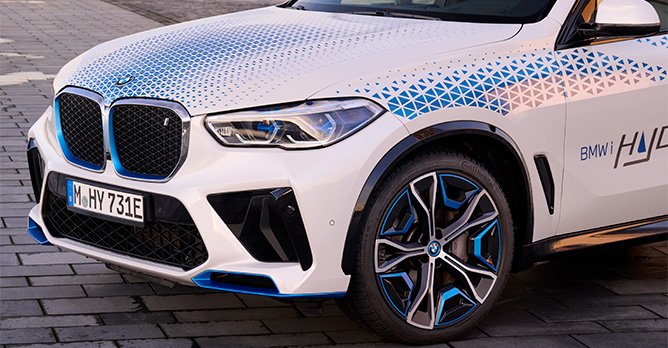
While its blue-accented front and rear aprons and kidney grille surrounds should not be unfamiliar to most, more prominent is the way the car announces its unique powertrain, with triangular patterns flowing over its bonnet and onto its sides. Of course, hardest to ignore are the words 'BMW i Hydrogen Fuel Cell' printed across the doors and tailgate.
Since development of the car started four years ago, an interesting thing to note is that the iX5 Hydrogen borrows from the pre-facelifted rather than recently refreshed X5. Nonetheless, it does get its own cooler shade of blue, and unique wheel inserts you won't find on other BMW i cars.
Yet another noteworthy detail is that despite eliminating the ICE X5's twin tailpipes, the iX5 Hydrogen does actually emit water vapour. This is channelled underneath the vehicle's chassis, rather than towards the rear.
Taking it in(side): Impressively normal
Ostensibly choosing to ease drivers into the (relatively) new technology instead of overwhelming them with otherworldly gadgetry, the iX5 Hydrogen is also far from foreign when you climb in. In fact, one might argue that the space feels more familiar than the ostentatious tech-flex-on-wheels that is the BMW iX.
Without a Curved Display, the car's digital instrument cluster and central infotainment touchscreen are once more distinct entities, and run OS 7 rather than OS 8. Likewise, a conventional 'stick' lever (blue-accented, of course) rises out of the centre console.
Nonetheless, the iX5 Hydrogen does remind occupants of its individuality again with its model-specific lettering imprinted onto the dashboard, and seatbelts outlined in blue.
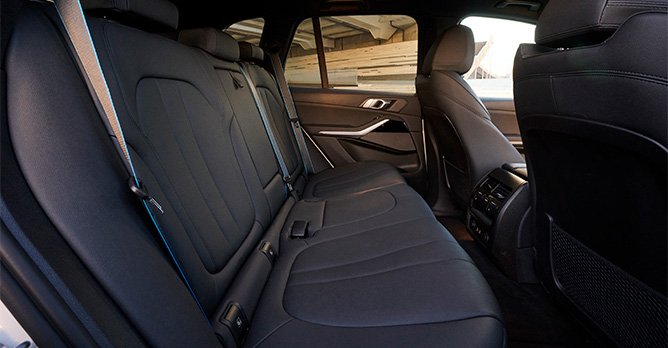
With its two hydrogen tanks neatly stored underneath the centre tunnel and rear seat unit, no compromises in space are made at the rear, allowing the car to offer as much head and legroom to second row passengers as its combustion-engined brethren.
Since the iX5 Hydrogen is packaged similarly to the plug-in hybrid X5 xDrive45e, its boot capacity is still quite sizable, although it also doesn't have third-row seating capability.
On the move: As EVs do
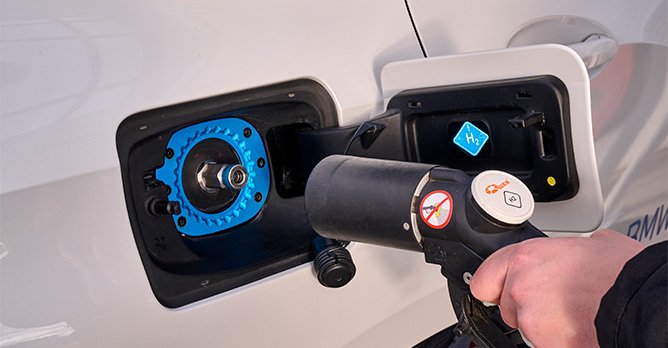
Instead, its front-mounted fuel cell system helps catalyse a chemical reaction between oxygen drawn in from the car's surroundings and hydrogen from its tanks, producing water and, naturally, electricity.
This fuel cell system is capable of 125kW (168bhp) on its own continuously, with excess energy from coasting overrun and braking phases sent to a small power battery mounted at the rear (we're told its capacity is less than 10kWh). In 'Boost' mode, combined output stands at 396bhp, delivered to the car's rear axle via a BMW iX-sourced electric motor.
Arguably the best part of what BMW has done, however, is craft the iX5 Hydrogen in such a way that you won't need to understand any of what was just mentioned to enjoy life behind its wheel.
BMW says the car is similar in weight to a similarly-sized PHEV - and less than a BEV. Therein lies the case for FCEVs, BMW says - larger models shave some weight off without the need to shove in massive batteries.
With 710Nm of instant torque, the iX5 Hydrogen will hit 100km/h from rest in under six seconds, before going on to reach a maximum of 185km/h.
Consequently, the driving experience is just as what you get in the firm's other EVs. The iX5 Hydrogen is smooth and silent; refined and quite cosseting (no doubt aided by its air suspension); perhaps, even slightly ballistic if your right foot wills. These qualities are rounded off with nicely-weighted brakes, whose regenerative strength can be intuitively toggled with paddle-shifters.
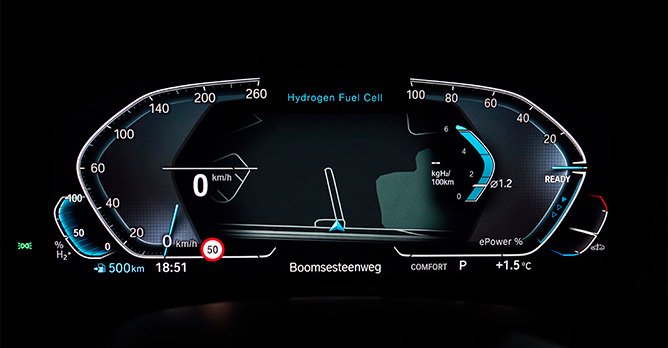
Of course, efficiency in such a vehicle is measured in a different manner to L/km or km/kWh. And so, with its instrument cluster headlined once more by 'Hydrogen Fuel Cell', the little figure just right-of-centre states 'kgH2/100km'. The 'largely familiar, slightly different' trend should be clear by now.
In just three to four minutes, the iX5 Hydrogen's two tanks are capable of getting refilled with 6kg of hydrogen at 700-bar - sufficient for a rated range of around 500km. Against the 20-minute downtimes for even BEVs with the most powerful battery architectures right now, that's lightning-quick.
But caveats naturally remain.
Another path towards normalcy - but only partially realised for now
Towards the adoption and construction of hydrogen infrastructure, commitment remains quite patchy across different territories.
On our media drive, we were told a staff member managed to drive from Munich to Antwerp (about 770-ish km if we're talking the FIZ to the Havenhuis) with the iX5 Hydrogen within a day - which is highly possible, since there are nearly 100 hydrogen refilling stations across Germany. Where we are in sunny Singapore, you'll have to cross the border to find our nearest station; Malaysia has one.
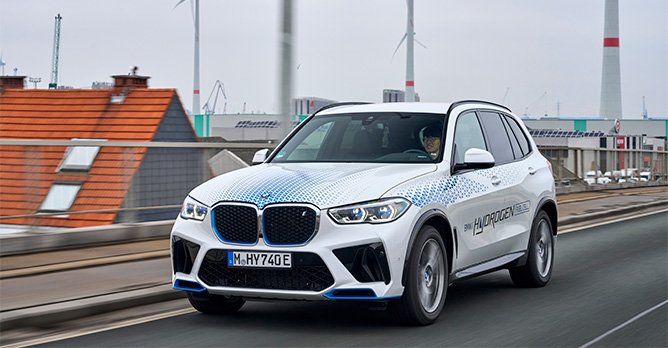
It doesn't matter how far the iX5 Hydrogen will go on a single tank or how quickly that tank is refilled - if it cannot even be refilled.
Make no mistake - the iX5 Hydrogen is as polished, fully-formed, and delightfully unassuming as a hydrogen vehicle can possibly be. You walk away from the car, not blown away by the staggering volume of tech it tries to show off, but won over by the silent finesse with which it mirrors all of an EV's qualities with the promise of convenience.
For now, however, we'll just have to wait for that promise to be fulfilled.
To jolt your memory slightly, here's a recount of our experiences with the iX5 Hydrogen's closest siblings in the BMW family!
The BMW iX is a luxury SUV that's comfortable on the road and mighty impressive on the tech front
The fourth generation X5 delivers on its promise of being a practical, high-tech and dynamically confident SUV
It may not look very exciting, but the new iX3 impresses with its electric capability and efficiency, as well as a very intriguing price tag
See more of this hydrogen-powered car in our video review as well!
What We Like
Clever packaging means it offers same practicality as plug-in hybrid X5
Serves up all the enjoyable qualities of an EV, chief of which are refinement and light-footedness
Lighter than similarly-sized BEV
Good range of close to 500km
Hydrogen tanks require only four minutes to refill
What We Dislike
Hydrogen refuelling infrastructure still feels out of reach locally
Not making a stop in Singapore
i.
Alongside the colour blue, that's a letter we've come to associate with BMW's range of electric vehicles for a while now. And by a while, we mean more than nine years - since the covers were first pulled off a curious-looking hatch called the BMW i3.

It says a lot, then, that it hasn't just tacked 'Hydrogen' to the back of the name of its latest X5-resembling fuel cell electric vehicle (FCEV). Instead, in naming it the BMW iX5 Hydrogen, the firm is making it clear: It wants to associate hydrogen power with its growing push for electromobility.
First glance: Familiar face

While its blue-accented front and rear aprons and kidney grille surrounds should not be unfamiliar to most, more prominent is the way the car announces its unique powertrain, with triangular patterns flowing over its bonnet and onto its sides. Of course, hardest to ignore are the words 'BMW i Hydrogen Fuel Cell' printed across the doors and tailgate.
Since development of the car started four years ago, an interesting thing to note is that the iX5 Hydrogen borrows from the pre-facelifted rather than recently refreshed X5. Nonetheless, it does get its own cooler shade of blue, and unique wheel inserts you won't find on other BMW i cars.
Yet another noteworthy detail is that despite eliminating the ICE X5's twin tailpipes, the iX5 Hydrogen does actually emit water vapour. This is channelled underneath the vehicle's chassis, rather than towards the rear.
Taking it in(side): Impressively normal
Ostensibly choosing to ease drivers into the (relatively) new technology instead of overwhelming them with otherworldly gadgetry, the iX5 Hydrogen is also far from foreign when you climb in. In fact, one might argue that the space feels more familiar than the ostentatious tech-flex-on-wheels that is the BMW iX.
Without a Curved Display, the car's digital instrument cluster and central infotainment touchscreen are once more distinct entities, and run OS 7 rather than OS 8. Likewise, a conventional 'stick' lever (blue-accented, of course) rises out of the centre console.
Nonetheless, the iX5 Hydrogen does remind occupants of its individuality again with its model-specific lettering imprinted onto the dashboard, and seatbelts outlined in blue.

With its two hydrogen tanks neatly stored underneath the centre tunnel and rear seat unit, no compromises in space are made at the rear, allowing the car to offer as much head and legroom to second row passengers as its combustion-engined brethren.
Since the iX5 Hydrogen is packaged similarly to the plug-in hybrid X5 xDrive45e, its boot capacity is still quite sizable, although it also doesn't have third-row seating capability.
On the move: As EVs do

Instead, its front-mounted fuel cell system helps catalyse a chemical reaction between oxygen drawn in from the car's surroundings and hydrogen from its tanks, producing water and, naturally, electricity.
This fuel cell system is capable of 125kW (168bhp) on its own continuously, with excess energy from coasting overrun and braking phases sent to a small power battery mounted at the rear (we're told its capacity is less than 10kWh). In 'Boost' mode, combined output stands at 396bhp, delivered to the car's rear axle via a BMW iX-sourced electric motor.
Arguably the best part of what BMW has done, however, is craft the iX5 Hydrogen in such a way that you won't need to understand any of what was just mentioned to enjoy life behind its wheel.
BMW says the car is similar in weight to a similarly-sized PHEV - and less than a BEV. Therein lies the case for FCEVs, BMW says - larger models shave some weight off without the need to shove in massive batteries.
With 710Nm of instant torque, the iX5 Hydrogen will hit 100km/h from rest in under six seconds, before going on to reach a maximum of 185km/h.
Consequently, the driving experience is just as what you get in the firm's other EVs. The iX5 Hydrogen is smooth and silent; refined and quite cosseting (no doubt aided by its air suspension); perhaps, even slightly ballistic if your right foot wills. These qualities are rounded off with nicely-weighted brakes, whose regenerative strength can be intuitively toggled with paddle-shifters.

Of course, efficiency in such a vehicle is measured in a different manner to L/km or km/kWh. And so, with its instrument cluster headlined once more by 'Hydrogen Fuel Cell', the little figure just right-of-centre states 'kgH2/100km'. The 'largely familiar, slightly different' trend should be clear by now.
In just three to four minutes, the iX5 Hydrogen's two tanks are capable of getting refilled with 6kg of hydrogen at 700-bar - sufficient for a rated range of around 500km. Against the 20-minute downtimes for even BEVs with the most powerful battery architectures right now, that's lightning-quick.
But caveats naturally remain.
Another path towards normalcy - but only partially realised for now
Towards the adoption and construction of hydrogen infrastructure, commitment remains quite patchy across different territories.
On our media drive, we were told a staff member managed to drive from Munich to Antwerp (about 770-ish km if we're talking the FIZ to the Havenhuis) with the iX5 Hydrogen within a day - which is highly possible, since there are nearly 100 hydrogen refilling stations across Germany. Where we are in sunny Singapore, you'll have to cross the border to find our nearest station; Malaysia has one.

It doesn't matter how far the iX5 Hydrogen will go on a single tank or how quickly that tank is refilled - if it cannot even be refilled.
Make no mistake - the iX5 Hydrogen is as polished, fully-formed, and delightfully unassuming as a hydrogen vehicle can possibly be. You walk away from the car, not blown away by the staggering volume of tech it tries to show off, but won over by the silent finesse with which it mirrors all of an EV's qualities with the promise of convenience.
For now, however, we'll just have to wait for that promise to be fulfilled.
To jolt your memory slightly, here's a recount of our experiences with the iX5 Hydrogen's closest siblings in the BMW family!
The BMW iX is a luxury SUV that's comfortable on the road and mighty impressive on the tech front
The fourth generation X5 delivers on its promise of being a practical, high-tech and dynamically confident SUV
It may not look very exciting, but the new iX3 impresses with its electric capability and efficiency, as well as a very intriguing price tag
See more of this hydrogen-powered car in our video review as well!
Thank You For Your Subscription.





























